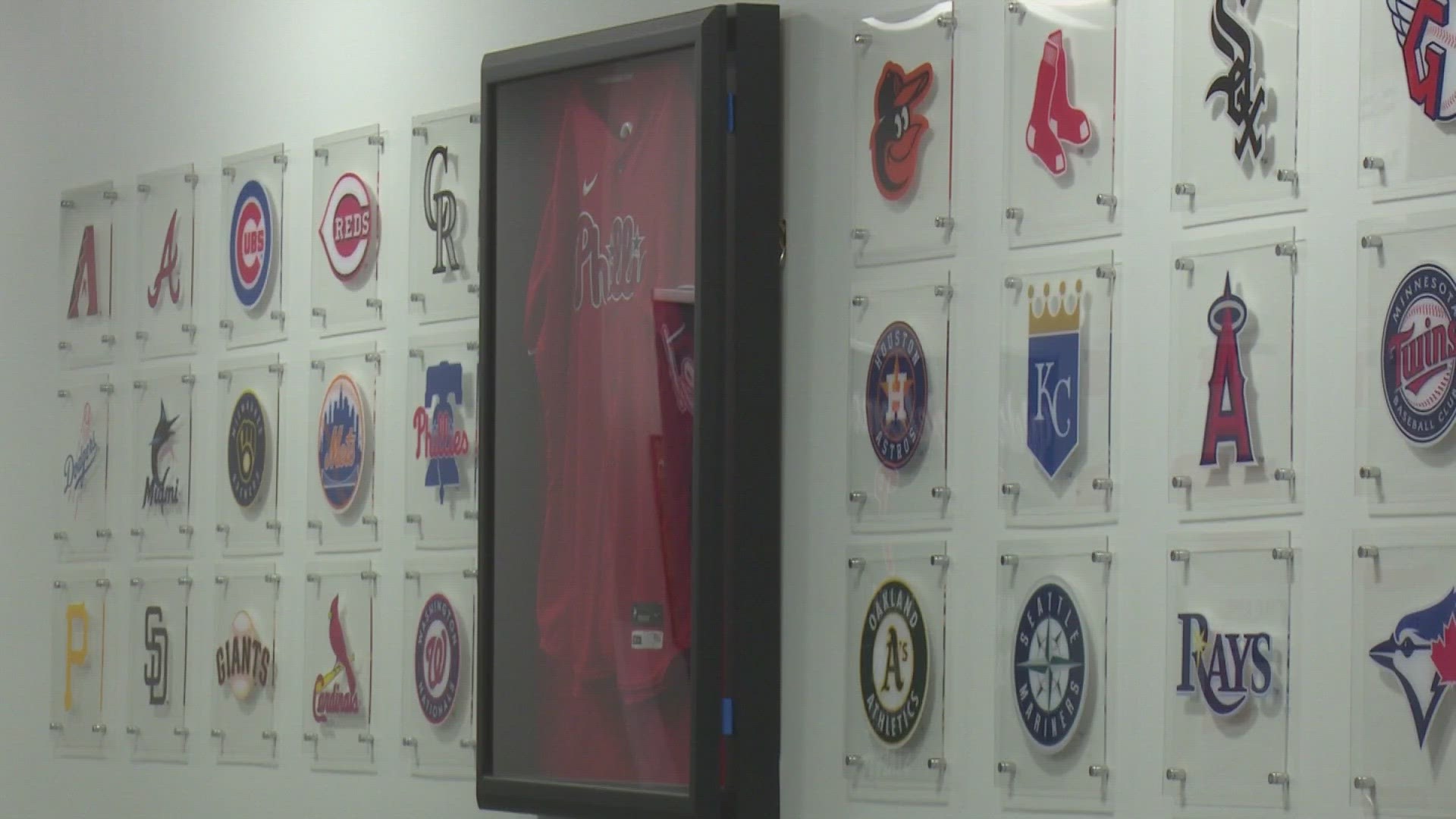ARLINGTON, Texas — The old Ballpark in Arlington was beloved by Texas Rangers fans, except for the one thing it didn't have: An air conditioner.
Our scorching hot summers made playing, and viewing, less than ideal in the dead of summer, even during night games. But did it *really* impact attendance? Did it actually stop Rangers fans from trekking to the ballpark 81 days out of the year?
The obvious answer might seem like a yes.
And there's probably something to that. A Sunday afternoon game in August was less-than-appealing when temperatures climbed into the triple digits. On the flip side, it made catching my first (and only) home run ball a little easier back in 2010, when Michael Young blasted a pitch into the left-centerfield bleachers. There wasn't much competition for the ball, and that was with Texas in the home stretch of a playoff season.
Through the years, an idea to put a climate-controlled dome over the Ballpark was tossed around. It never came to fruition.
Then came 2016, when the Rangers unveiled plans for a new indoor ballpark, where the temperature would be set to a comfortable 72 degrees.
Globe Life Field opened in 2020, but the pandemic forced fans to wait until that October, when a limited number of tickets were sold for postseason play. The next season, 2021, was a different story, with a full-capacity Opening Day and then near-capacity crowds the rest of the year and full crowds in 2022.
So now that the Rangers have a couple seasons in the new stadium, we decided to dive into the attendance numbers.
Does a climate-controlled environment actually help attendance? Or is it all about the product on the field?
The answer seems to be a little of both. The Rangers' 2022 attendance at Globe Life Field lagged slightly behind the final years of the outdoor stadium. But also: The Rangers' 2017-2022 seasons were among the worst stretch in franchise history, so enthusiasm was lacking. Maybe the indoor stadium kept the attendance afloat.
First, a couple disclaimers: This isn't an exact science, and sure, it may seem like cherry-picking numbers. It's a snapshot of the attendance numbers from the some of the best years of Rangers baseball and comparing those to the worst, regardless of which stadium they played in.
One other caveat: Globe Life Field is smaller than its predecessor, Globe Life Park (formerly the Ballpark in Arlington) by about 8,000 seats. But only one of the club's recent attendance numbers have exceeded the Globe Life Field capacity of 40,300, on a game-by-game average. That was in 2012, when the Rangers were coming off back-to-back World Series appearances. As you'll notice, there's been a not-so-surprising trend with Rangers attendance: When the team is good, the fans show up.
If the Rangers start winning again, which they very well could in 2023, will Globe Life Field's comfy indoor confines get packed? I wouldn't bet against that.
Here's a quick snapshot comparing the last two seasons at Globe Life Field, compared to the previous decade at Globe Life Park:

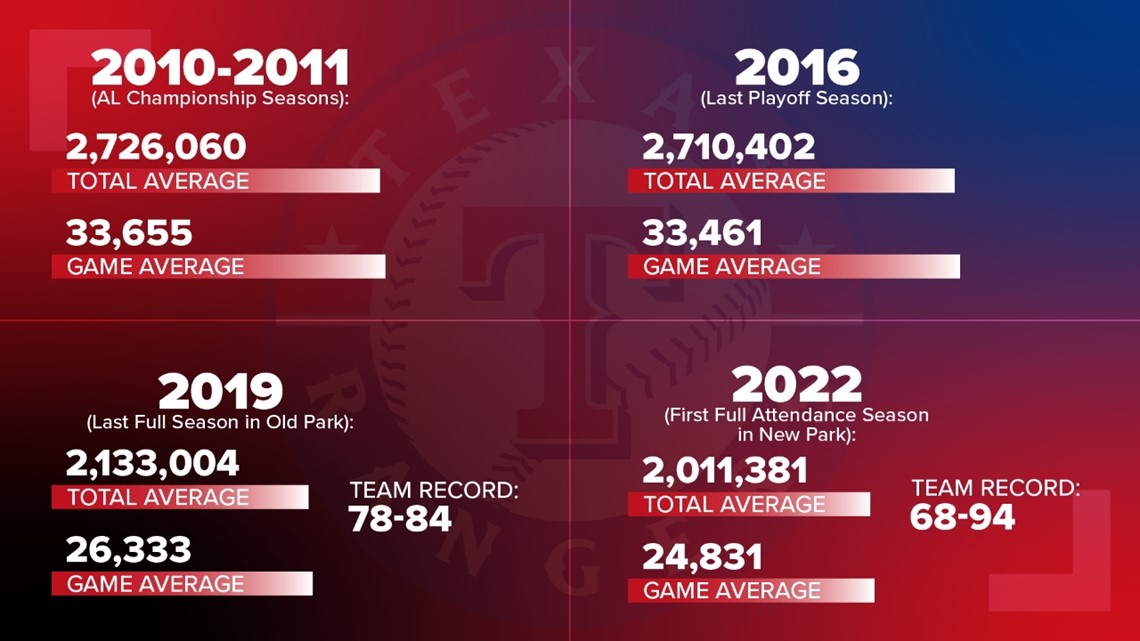
And here are the full numbers, going back to that 2010 season, courtesy of ESPN:
2022
- Total attendance: 2,011,381
- Per game: 24,831
- Team record: 68-94
2021*
- Total attendance: 2,110,258
- Per game: 26,052
- Team record: 60-102
2019**
- Total attendance: 2,133,004
- Per game: 26,333
- Team record: 78-84

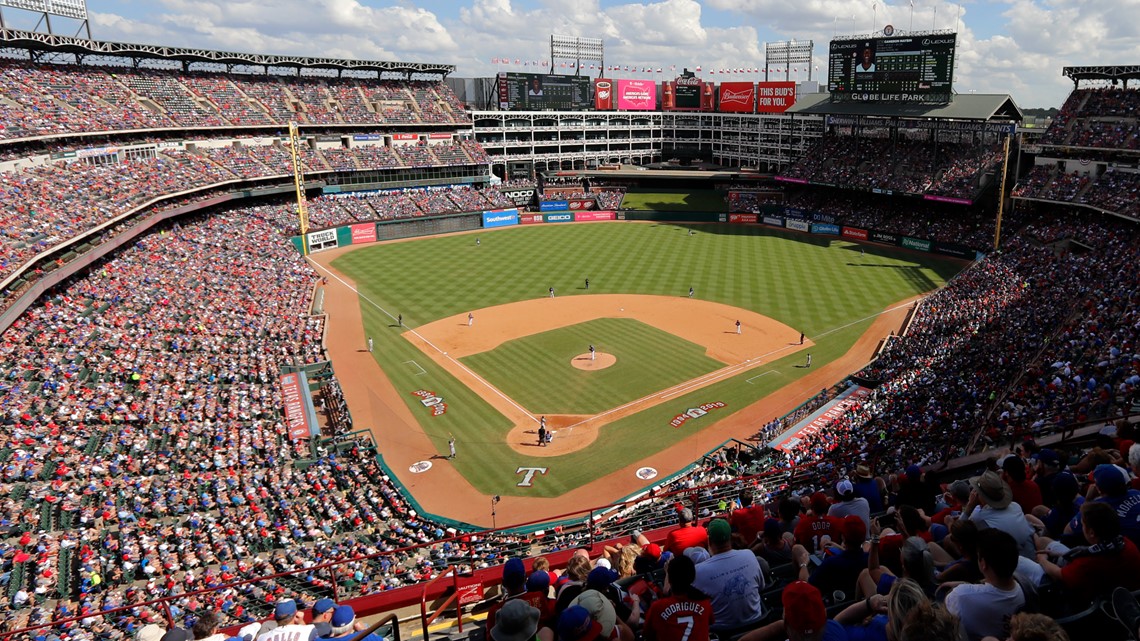
2018
- Total attendance: 2,107,107
- Per game: 26,013
- Team record: 67-95
2017
- Total attendance: 2,507,760
- Per game: 30,960
- Team record: 78-84
2016
- Total attendance: 2,710,402
- Per game: 33,461
- Team record: 95-67

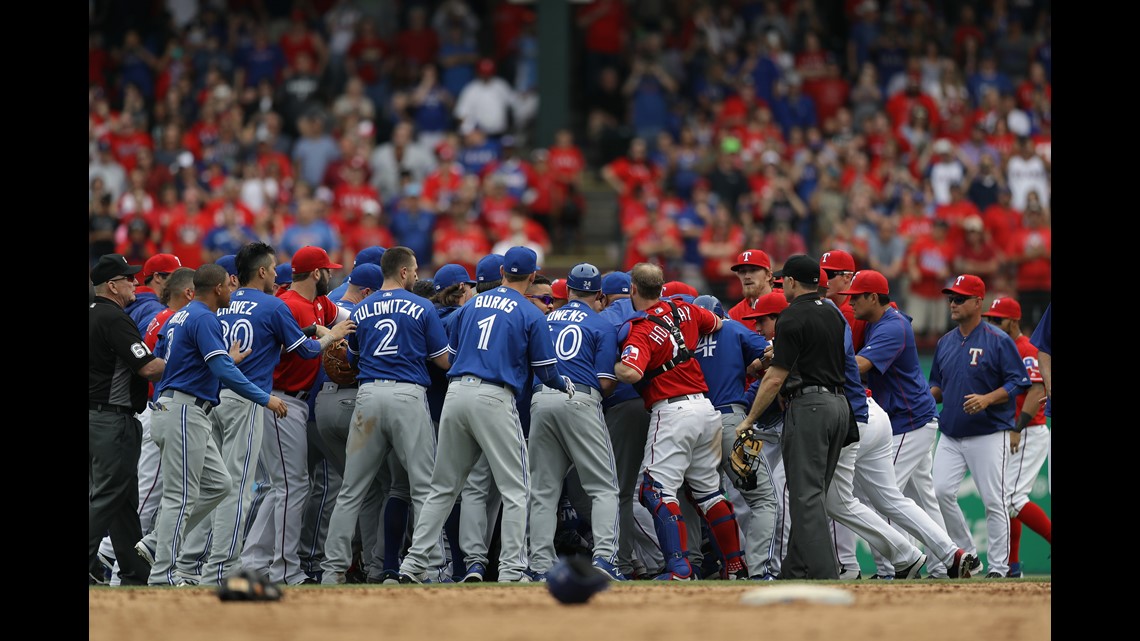
2015
- Total attendance: 2,491,875
- Per game: 30,763
- Team record: 88-74
2014
- Total attendance: 2,718,733
- Per game: 33,564
- Team record: 67-95
2013
- Total attendance: 3,178,273
- Per game: 38,579
- Team record: 91-72
2012
- Total attendance: 3,460,280
- Per game: 42,719
- Team record: 93-69
2011
- Total attendance: 2,946,949
- Per game: 36,382
- Team record: 96-66
2010
- Total attendance: 2,505,171
- Per game: 30,928
- Team record: 90-72

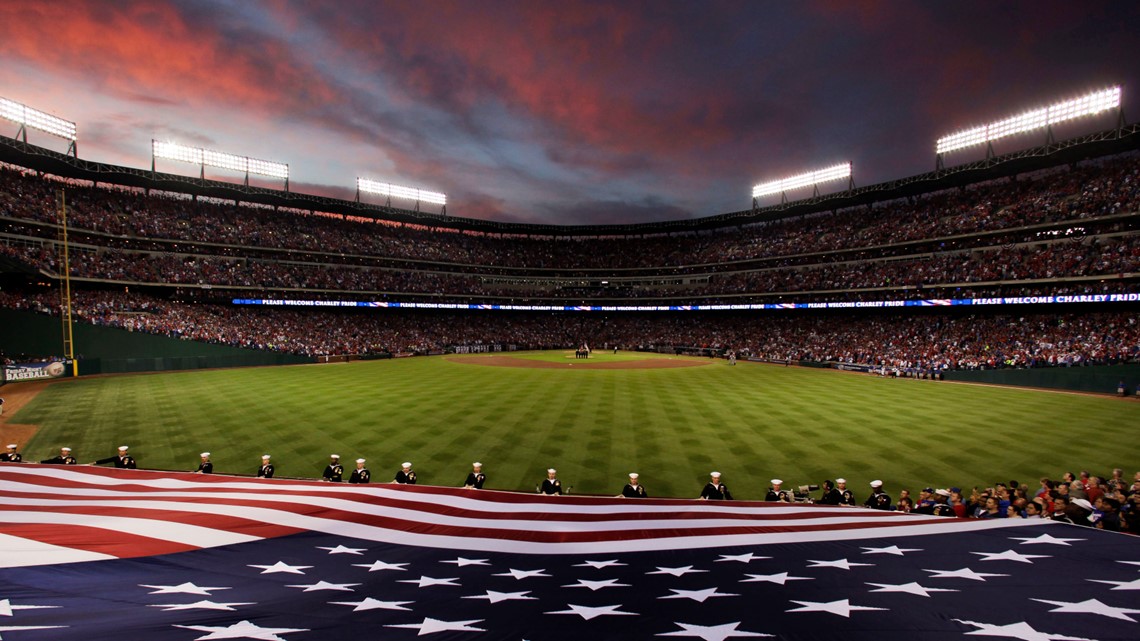
* First year of new Globe Life Field
**Last year of Globe Life Park

